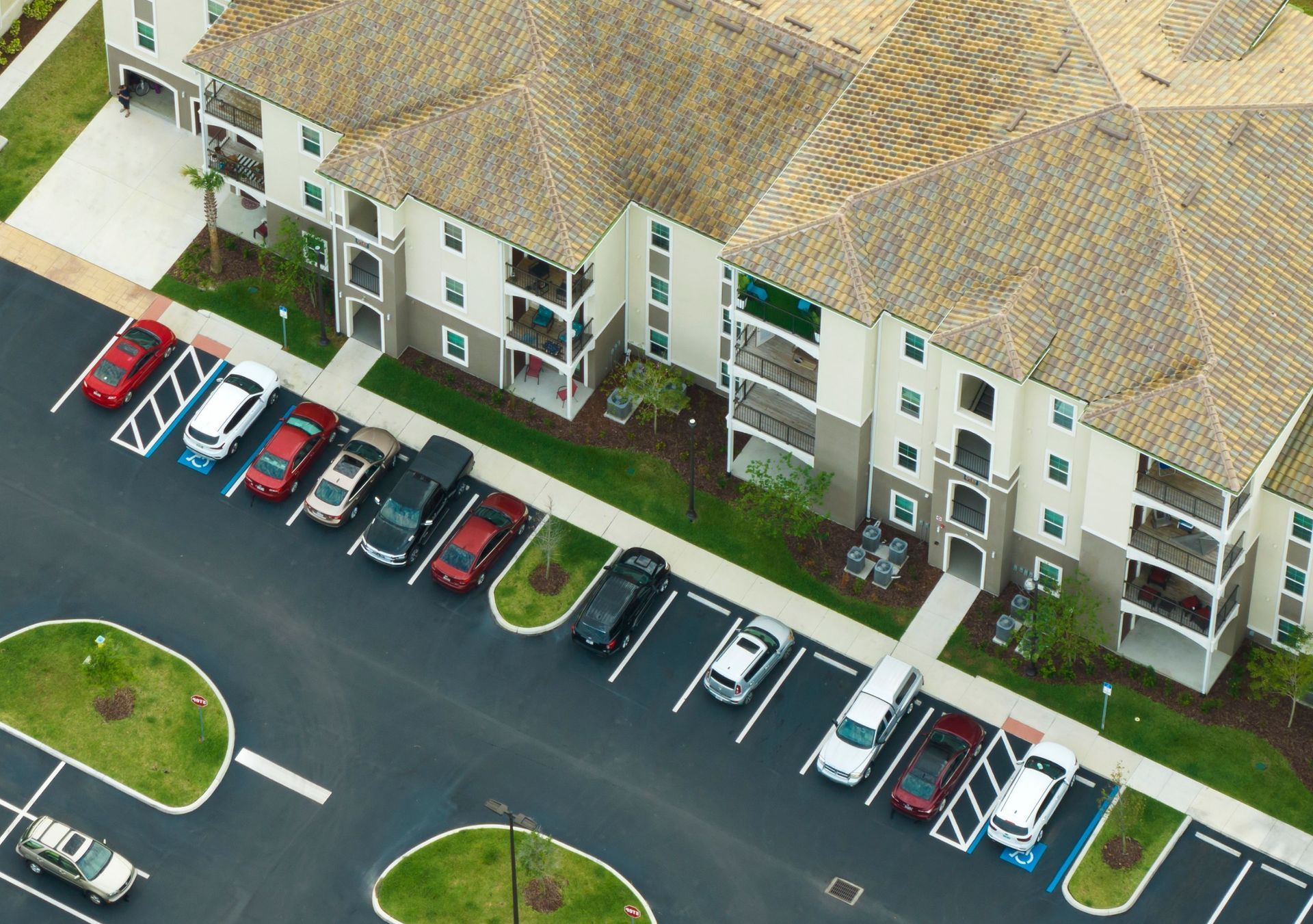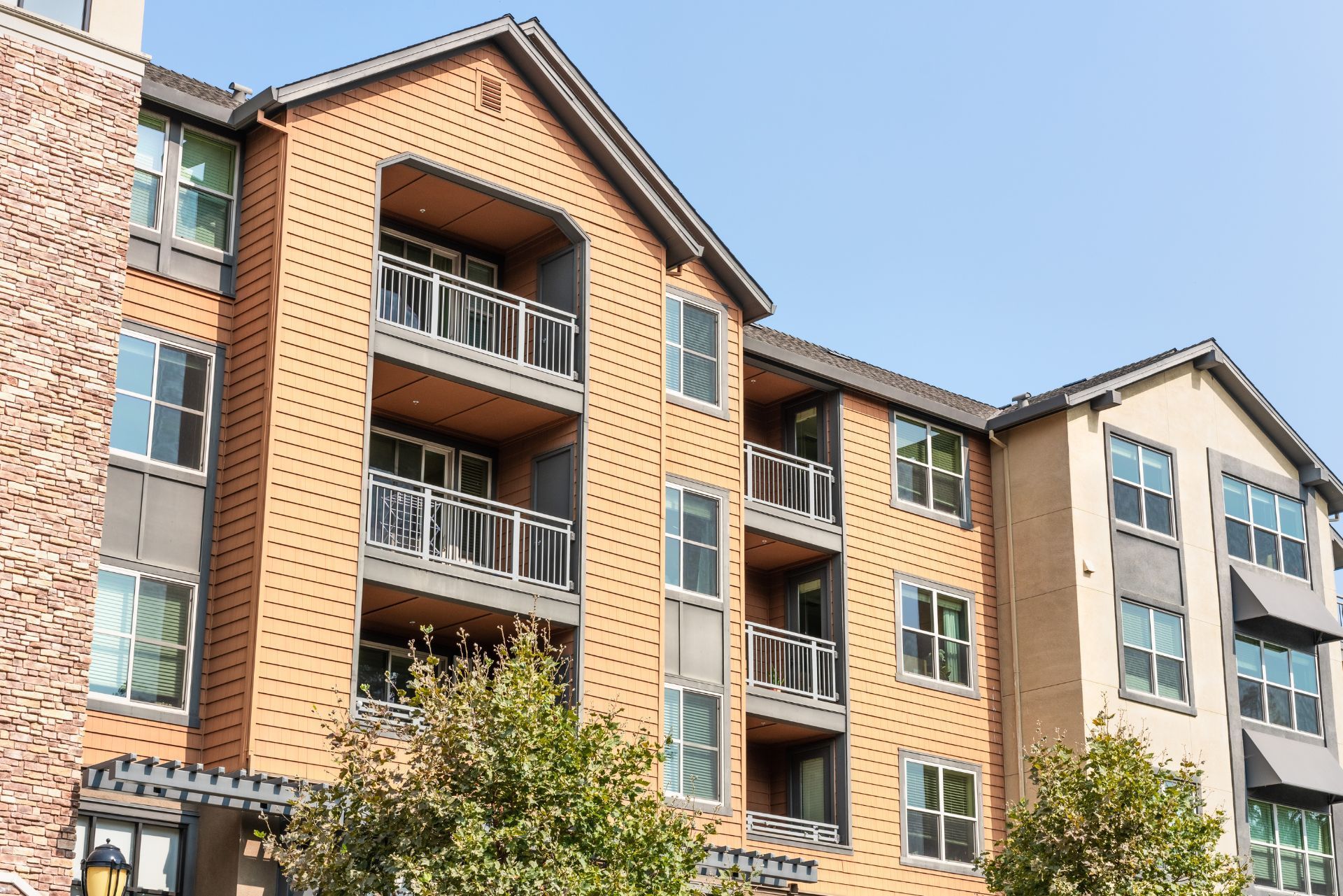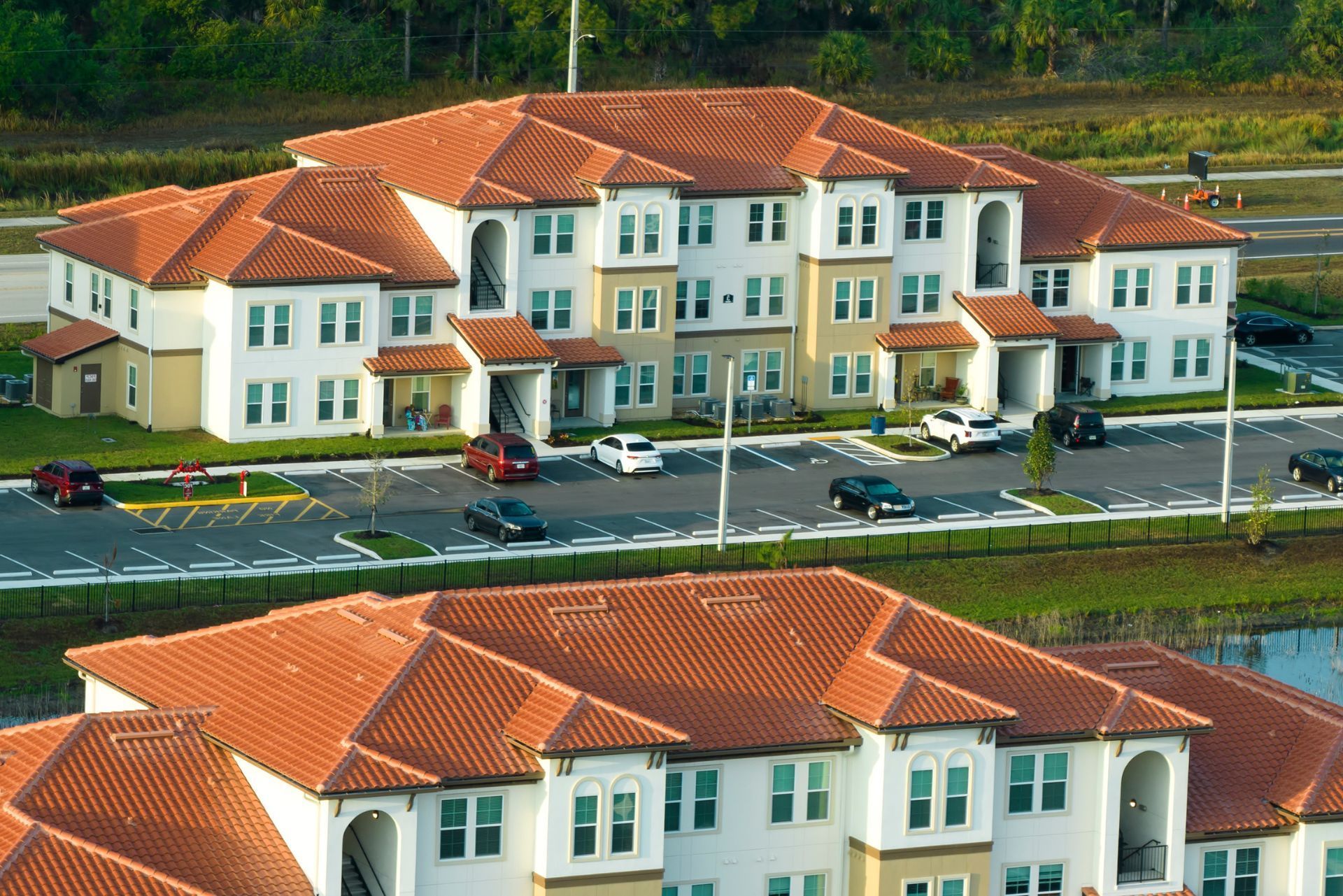New York Multi-Unit Apartment Complex Insurance
See How We're Different:
or Call Us: 212-425-8150

Most Common Business Policies
Index
Contact Us
Managing a multi-unit apartment complex in New York comes with a unique set of challenges and responsibilities. One of the most critical aspects of this management is ensuring that the property is adequately insured. Understanding the nuances of multi-unit apartment complex insurance is essential for property owners and managers alike. This article will delve into the various facets of this insurance type, including coverage options, legal requirements, and tips for choosing the right policy.
Understanding Multi-Unit Apartment Complex Insurance
Multi-unit apartment complex insurance is designed to protect property owners from financial losses associated with their rental properties. This type of insurance covers a range of risks, including property damage, liability claims, and loss of rental income. Given the complexities of managing multiple units, having the right insurance coverage is crucial for safeguarding investments.
What Does Multi-Unit Apartment Complex Insurance Cover?
The coverage offered by multi-unit apartment complex insurance can vary widely depending on the policy and the insurer. However, most policies generally include:
- Property Damage: This covers damage to the building structure due to various risks such as fire, vandalism, or natural disasters.
- Liability Coverage: This protects the property owner against claims made by tenants or visitors who may be injured on the premises.
- Loss of Rental Income: If the property becomes uninhabitable due to a covered event, this coverage compensates the owner for lost rental income.
In addition to these standard coverages, many policies offer optional add-ons that can provide further protection. For instance, coverage for equipment breakdowns, flood insurance, and earthquake insurance may be available depending on the location and specific needs of the property. Property owners might also consider adding coverage for tenant default, which can help mitigate losses if a tenant fails to pay rent due to financial hardship.
Legal Requirements for Insurance in New York
In New York, while there is no specific law mandating that landlords carry insurance, it is highly advisable. Many mortgage lenders require property owners to have insurance as a condition of the loan. Furthermore, having adequate insurance can protect landlords from potential lawsuits and financial liabilities.
Additionally, New York City has its own regulations regarding building safety and tenant rights, which can indirectly affect insurance needs. For example, property owners must comply with the New York City Housing Maintenance Code, which outlines the responsibilities of landlords in maintaining safe living conditions. Failure to comply can lead to legal issues, making insurance even more critical. Moreover, landlords are often required to provide tenants with a safe environment, which includes regular maintenance and prompt repairs. This responsibility can lead to increased liability risks, making comprehensive insurance coverage essential for protecting both the property and the owner's financial interests.
Furthermore, it is important for property owners to stay informed about changes in local laws and regulations that may impact their insurance requirements. For instance, recent legislative updates may introduce new safety standards or tenant protections that could necessitate adjustments in coverage. Engaging with a knowledgeable insurance agent can help landlords navigate these complexities and ensure they have the appropriate coverage tailored to their specific situation. By proactively managing their insurance needs, landlords can not only protect their investments but also foster positive relationships with their tenants, ultimately leading to a more successful rental business.

Types of Coverage Available
When considering multi-unit apartment complex insurance, it is essential to explore the various types of coverage available. Each type serves a different purpose and can be tailored to meet the specific needs of the property owner.
Building Coverage
Building coverage is the cornerstone of any multi-unit apartment complex insurance policy. This coverage protects the physical structure of the building, including the roof, walls, and common areas. It typically covers damages caused by fire, storms, vandalism, and other perils. Property owners should ensure that the coverage amount reflects the current replacement cost of the building to avoid underinsurance. Additionally, some policies may offer extended coverage options, such as protection against earthquakes or floods, which can be particularly important in regions prone to such natural disasters. Understanding the specific risks associated with the location of the apartment complex can help owners make informed decisions about the extent of their building coverage.
Contents Coverage
Contents coverage protects the personal property located within the apartment complex, such as furniture, appliances, and equipment used for maintenance. This type of coverage is crucial for owners who provide furnished units or have common areas equipped with amenities like gyms or lounges. It's important to assess the value of these contents accurately to ensure adequate protection. Furthermore, property owners should consider the potential for theft or damage to these items, especially in high-traffic areas. Some insurance policies may also allow for the inclusion of coverage for personal belongings of tenants, providing an added layer of security and peace of mind for both the property owner and the residents.
Liability Coverage
Liability coverage is essential for protecting property owners against claims arising from injuries or damages that occur on their property. This can include slip and fall accidents, dog bites, or any other incidents that may lead to a lawsuit. Liability insurance can cover legal fees, medical expenses, and settlements, making it a vital component of any multi-unit apartment complex insurance policy. Additionally, property owners may want to consider umbrella liability insurance, which provides an extra layer of protection beyond the standard policy limits. This can be particularly beneficial in the event of a catastrophic incident, where damages and legal fees could exceed the basic coverage limits. By investing in comprehensive liability coverage, property owners can safeguard their financial interests and ensure that they are prepared for unforeseen circumstances that may arise within their complex.
Factors Affecting Insurance Premiums
Several factors can influence the insurance premiums for multi-unit apartment complexes. Understanding these factors can help property owners make informed decisions when selecting their insurance policies.
Location of the Property
The geographical location of the apartment complex plays a significant role in determining insurance premiums. Properties located in areas prone to natural disasters, such as floods or hurricanes, may face higher premiums due to the increased risk. Additionally, urban areas with higher crime rates may also lead to elevated insurance costs. Furthermore, proximity to fire departments and emergency services can also affect premiums; properties that are closer to these services often benefit from lower rates as they are perceived to have a reduced risk of catastrophic loss.
Building Age and Condition
The age and condition of the building are critical factors in calculating insurance premiums. Older buildings may have outdated electrical systems or plumbing, which can increase the risk of damage or liability claims. Regular maintenance and updates can help mitigate these risks and potentially lower insurance costs. Additionally, newly constructed buildings that adhere to modern safety codes and regulations may qualify for discounts, as they are considered less likely to suffer from structural failures or other issues that could lead to claims.
Claims History
A property owner's claims history can significantly impact insurance premiums. If a property has a history of frequent claims, insurers may view it as a higher risk, leading to increased premiums. Conversely, a clean claims history can result in lower rates and potential discounts. It's also worth noting that insurers may take into account the type of claims made; for instance, liability claims may weigh more heavily than property damage claims, influencing the overall risk assessment and premium calculations.
Tenant Demographics
The demographics of the tenants residing in the apartment complex can also play a role in determining insurance premiums. Properties that cater to families may be seen as lower risk compared to those that attract a younger, transient population, which might be associated with higher turnover and potential for property damage. Additionally, the presence of amenities such as pools or gyms can also influence premiums, as these features may increase the likelihood of accidents or injuries on the property, leading to higher liability risks.
Security Features
Investing in security features can have a positive impact on insurance premiums as well. Properties equipped with security cameras, gated access, and alarm systems are often viewed as lower risk by insurers. These enhancements not only deter criminal activity but also provide evidence in the event of a claim, potentially expediting the claims process. Moreover, some insurance companies offer discounts for properties that implement advanced security measures, recognizing the reduced likelihood of theft or vandalism.

Choosing the Right Insurance Provider
Selecting the right insurance provider is just as important as choosing the right coverage. A reputable insurer can make a significant difference in the claims process and overall customer experience.
Researching Insurance Companies
Before committing to an insurance provider, it is essential to conduct thorough research. Look for companies that specialize in multi-unit apartment complex insurance and have a strong reputation in the industry. Reading customer reviews and testimonials can provide valuable insights into the insurer's reliability and customer service. Additionally, consider checking their financial stability ratings through independent agencies like A.M. Best or Standard & Poor's. A financially stable company is more likely to fulfill its obligations and pay claims promptly, which is crucial in times of need.
Comparing Quotes
Obtaining quotes from multiple insurance providers is a crucial step in the selection process. Comparing quotes allows property owners to assess the coverage options, limits, and premiums offered by different insurers. Be sure to consider not just the price but also the quality of coverage and the insurer's reputation. It's also beneficial to inquire about any available discounts, such as those for bundling policies or implementing safety measures in your apartment complex. These discounts can significantly affect your overall costs and provide additional savings.
Understanding Policy Terms
Before finalizing an insurance policy, it is vital to understand the terms and conditions thoroughly. Pay close attention to the coverage limits, exclusions, and deductibles. If there are any terms that are unclear, don’t hesitate to ask the insurer for clarification. A clear understanding of the policy will help prevent surprises during the claims process. Furthermore, consider discussing potential endorsements or riders that can enhance your coverage, such as adding protection against natural disasters or liability coverage for common areas. These additional provisions can tailor your policy to better suit the specific needs of your multi-unit property.
Common Exclusions in Multi-Unit Apartment Complex Insurance
While multi-unit apartment complex insurance provides extensive coverage, it is also essential to be aware of common exclusions that may apply. Understanding these exclusions can help property owners make informed decisions about additional coverage options.
Natural Disasters
Many standard policies exclude coverage for certain natural disasters, such as floods and earthquakes. Property owners in high-risk areas may need to purchase separate policies or endorsements to protect against these specific risks. It is crucial to assess the location of the property and consider additional coverage if necessary. For instance, properties situated near bodies of water or in seismic zones should prioritize flood and earthquake insurance, respectively, as the financial implications of such disasters can be devastating. In addition, some insurers may offer specialized coverage options that can be tailored to the unique risks associated with a property’s geographical location, making it worthwhile for owners to consult with insurance professionals who can provide insights on the best coverage strategies.
Tenant Damage
Damage caused by tenants is often not covered under standard multi-unit apartment complex insurance policies. This includes intentional damage or negligence by tenants. Property owners may want to consider requiring tenants to carry renters insurance to protect against potential damages. Additionally, implementing a thorough tenant screening process can help mitigate risks associated with tenant-related damages. By checking references, conducting background checks, and assessing financial stability, property owners can select tenants who are more likely to respect the property and adhere to lease agreements. Furthermore, establishing clear communication about expectations and responsibilities in the lease can also help in reducing disputes and fostering a sense of community within the apartment complex.
Wear and Tear
Insurance policies typically do not cover normal wear and tear on the property. This includes issues like aging roofs, outdated appliances, or general maintenance needs. Property owners should budget for regular maintenance and repairs to avoid unexpected costs. Creating a proactive maintenance schedule can significantly extend the life of various property components and enhance tenant satisfaction. For example, regular inspections of plumbing, electrical systems, and HVAC units can prevent minor issues from escalating into costly repairs. Additionally, investing in property upgrades, such as energy-efficient appliances or improved insulation, can not only reduce long-term maintenance costs but also attract quality tenants who appreciate modern amenities. By prioritizing maintenance and upgrades, property owners can ensure their investment remains valuable and appealing in a competitive rental market.
Tips for Reducing Insurance Costs
Implementing Safety Measures
Investing in safety measures can significantly lower insurance premiums. Installing security systems, smoke detectors, and fire alarms can reduce the risk of claims and may qualify property owners for discounts. Additionally, maintaining the property in good condition can help prevent accidents and subsequent claims.
Bundling Policies
Many insurance providers offer discounts for bundling multiple policies. Property owners may consider combining their multi-unit apartment complex insurance with other types of insurance, such as liability or commercial auto insurance, to save on overall costs.
Regularly Reviewing Coverage
As property values and risks change over time, it is essential to review insurance coverage regularly. Conducting an annual review can help ensure that the policy remains adequate and that the property owner is not overpaying for coverage. Adjusting coverage limits or exploring new options can lead to significant savings.
Understanding the Claims Process
Knowing how to navigate the claims process is crucial for property owners in the event of an incident. A smooth claims process can make a significant difference in recovering from a loss.
Reporting a Claim
When an incident occurs, the first step is to report the claim to the insurance provider as soon as possible. Most insurers have a dedicated claims hotline or online portal for reporting incidents. Providing detailed information and documentation, such as photographs and witness statements, can help expedite the claims process.
Working with Adjusters
After reporting a claim, an insurance adjuster will typically be assigned to assess the situation. It is essential to cooperate with the adjuster and provide any requested documentation. This may include repair estimates, receipts, and other relevant information. The adjuster's evaluation will play a critical role in determining the outcome of the claim.
Receiving Compensation
Once the claim is approved, the insurance company will provide compensation based on the terms of the policy. Understanding the payout process and any potential deductibles is crucial for property owners. If there are any disputes regarding the claim amount, property owners may need to negotiate with the insurer or seek legal advice.
Conclusion
Multi-unit apartment complex insurance is a vital component of property management in New York. Understanding the various coverage options, legal requirements, and factors influencing premiums can help property owners make informed decisions. By choosing the right insurance provider, being aware of common exclusions, and implementing safety measures, property owners can protect their investments and ensure peace of mind. Regularly reviewing coverage and understanding the claims process further enhances the ability to navigate the complexities of insurance effectively.
In a dynamic real estate market like New York, staying informed about insurance options is not just beneficial—it's essential for safeguarding both the property and the tenants who call it home.
